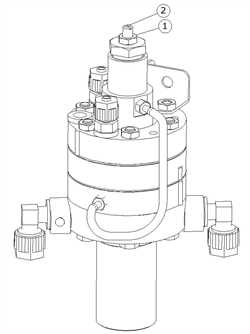
Product Name: Gefa TYPE HYDRAULIC Control Unit
Brand: Gefa
Product Code: TYPE HYDRAULIC
Tags: Gefa
TYPE HYDRAULIC Control
HYDRAULIC Control
HYDRAULIC Control
Gefa Control
TYPE HYDRAULIC
Gefa HYDRAULIC Unit
Gefa TYPE Control
TYPE Unit
Gefa TYPE
TYPE Control Unit
HYDRAULIC
Gefa HYDRAULIC
Gefa TYPE Control
Gefa HYDRAULIC Control
Gefa TYPE HYDRAULIC Control Unit
Control
HYDRAULIC Unit
Gefa HYDRAULIC Control
HYDRAULIC Control Unit
Control Unit
Are you interested in the product Gefa TYPE HYDRAULIC Control Unit from manufacturer Gefa with code TYPE HYDRAULIC? Contact us now and get offer. Imtek Engineering, the fastest and most reliable industrial equipment supplier in the world, will offer you the best offer!
Get Offer With E-Mail: info@im-tek.com
Get a offer for Gefa TYPE HYDRAULIC Control Unit from our live support team now!
The automatic flushing cycle described below takes a few seconds and does not interrupt the supply of process water. Water flows from the inlet through the coarse and fine screens to the outlet. At a pre-set pressure differential (0.5 bar —7 psi), the rinse controller activates the piston and opens the flushing valve. The water from the rotor chamber flows out the drain. The pressure in the rotor chamber drops, releasing a strong flushing stream that flows through the filter.This drop in pressure and corresponding release of the backflush stream create suction on the nozzle tips. This effect actuates spot cleaning directly in front of the openings of each nozzle on the inner surface of the fine screen. The water and particles passing through the hydraulic rotor cause the dirt collector to rotate, and the piston moves in an axial direction to the opposite end of the filter.The combination of rotational and axial movement of the dirt collector assembly ensures that the nozzles sweep the entire inner surface of the fine screen.When the first stroke is completed, the flushing valve closes and after a very short interval the rinse controller activates the second backflush stroke. The dirt collector assembly spins, moving with the piston in the opposite direction and returning to its original position.This self-cleaning process takes between 8–15 seconds, depending on the operating pressure.